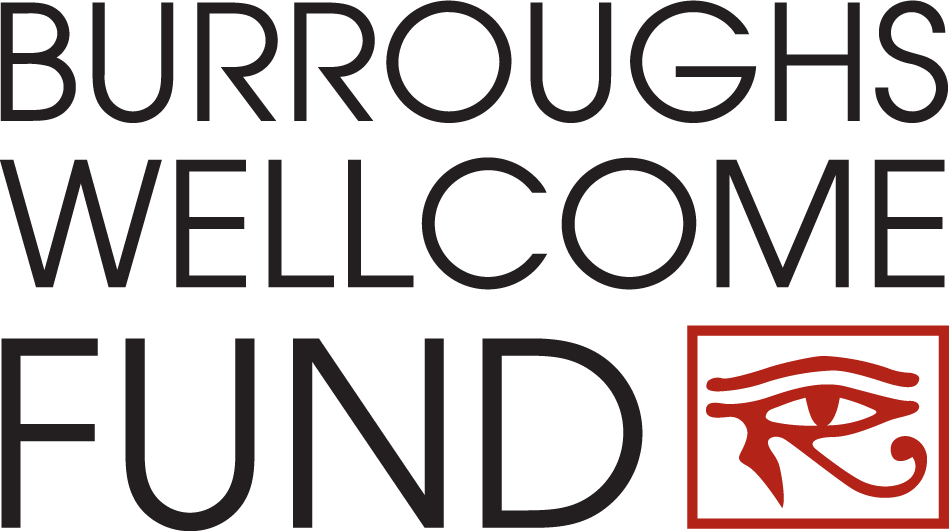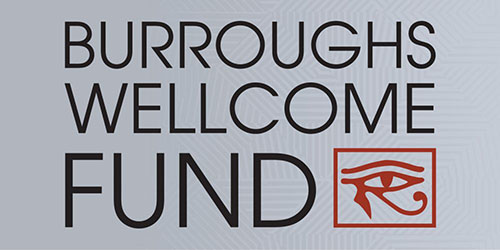Media Highlights

The Burroughs Wellcome Fund’s mission is to advance biomedical science by supporting research and other educational activities. This newsletter is a curated sample of research and activities conducted by recipients of Fund support.
Upcoming grant deadlines:
Preterm Birth Initiative | Deadline: Dec. 4, 2018
Postdoctoral Enrichment Program | Deadline: Jan. 15, 2019
Collaborative Research Travel Grants | Deadline: Feb. 1, 2019
Physician-Scientist Institutional Program | Deadline: Feb. 15, 2019
Original Content
Burroughs Wellcome Fund, 10-31-2018
Alice Chen-Plotkin, MD: Overlapping Worlds
As a physician-scientist and a research team leader Alice Chen-Plotkin finds herself at home in numerous overlapping worlds.
For many diseases and disorders nowadays, there are plenty of association studies-that is, evidence of some relation between a portion of the genome and a physiological trait. Figuring out exactly how the two are related, however, poses more of a challenge. It’s the rare research team that has the opportunity, skills, and sheer doggedness to uncover every point along the line connecting a genetic variant to the presence or absence of a specific protein in cells, and from there to the development of a particular physical condition.
Alice Chen-Plotkin, associate professor of neurology at the University of Pennsylvania, knows all about the challenges of this type of investigation because she has navigated them herself.
Features
Medical Health News, 10-15-2018
Bonni Diamond elected to National Academy of Medicine.
…in the Pathogenesis of Infectious Disease program at the Burroughs Wellcome Fund. Diamond earned his bachelor’s degree in political science
MyScience.org – Careers and Science, 9-26-2018
Shenoy To Receive Andrew Carnegie Prize in Mind and Brain Sciences
Carnegie Mellon University will award the sixth annual Andrew Carnegie Prize in Mind and Brian Sciences to Krishna V. Shenoy, the Hong Seh and Vivian W. M. Lim Professor of Engineering at Stanford University.
Shenoy has received a Burroughs Wellcome Fund Career Award in the Biomedical Sciences, a McKnight Technological Innovations in Neurosciences Award, a National Institutes of Health (NIH) Director’s Pioneer Award, the 2010 Stanford University Postdoc Mentoring Award, and was selected as an Alfred P. Sloan Fellow and a Fellow of the American Institute for Medical and Biological Engineering (AIMBE) College of Fellows.
Fred Hutch, 9-26-2018
Fred Hutch metastatic breast cancer researcher gets 3-year Komen grant
Since joining Fred Hutch in 2015, Cheung has received several accolades, including the Burroughs Wellcome Fund Career Award for Medical Scientists; the Athena Endowed Award for Excellence in Breast Cancer Research; a V Foundation Scholar Grant in 2017 and a Department of Defense Era of Hope Scholar Award earlier this year.
Dr. Kevin Cheung’s work focuses on shutting down tumor cell clusters which seed new metastases
Harvard Public Affairs & Communications, 10-31-2018
Seven recognized for high-risk, high-reward research
In addition to the New Innovator Award, his lab is supported by a Burroughs Wellcome Fund Career Award at the Scientific Interface, a Glenn Foundation for Medical Research and AFAR Grant for Junior Faculty, and a Broad Institute Next Generation Fund award.
Seven Harvard scientists are among the 89 researchers who have been selected to receive grants through the National Institutes of Health’s High-Risk, High-Reward Research program, which funds innovative research designed to address major challenges in biomedical science.
Research
EurekAlert!, 10-23-2018
HPV blood test shows promise for tracking head and neck cancer after treatment
The study was supported by the University Cancer Research Fund, Burroughs Wellcome Fund, the University of North Carolina School of Medicine…
A new blood test developed by University of North Carolina Lineberger Comprehensive Cancer Center researchers shows promise for tracking HPV-linked head and neck cancer patients to ensure they remain cancer-free after treatment. Researchers will present preliminary findings at the 60th Annual Meeting of the American Society for Radiation Oncology in San Antonio on Tuesday, Oct. 23.
Fred Hutch, 10-16-2018
Forecasting the shape of flu viruses to come
Hughes Medical Institute and the Simons Foundation, and the Burroughs Wellcome Fund supported this research.
As millions of Americans line up for their annual flu shots this fall, scientists around the globe are already planning for the next round. How can they change next year’s vaccines to stop the strains of influenza most likely to emerge in 2019? The effort to pick new vaccines to block ever-evolving flu viruses requires both science and serendipity.
eLife Sciences, 10-16-2018
Maturing Mycobacterium smegmatis peptidoglycan requires non-canonical crosslinks to maintain shape
This research was funded by National Institutes of Health (U19 AI107774), Burroughs Wellcome Fund (Career Award at the Scientific Interface), American Heart Association (14POST18480014)…
In most well-studied rod-shaped bacteria, peptidoglycan is primarily crosslinked by penicillin-binding proteins (PBPs). However, in mycobacteria, crosslinks formed by L,D-transpeptidases (LDTs) are highly abundant.
eLife Sciences, 10-5-2018
Simulation of spontaneous G protein activation reveals a new intermediate driving GDP unbinding
This research was funded by National Institutes of Health (Grant R01GM12400701), National Science Foundation (CAREER Award MCB-1552471), Burroughs Wellcome Fund (Career Award at the Scientific Interface), David and Lucile Packard Foundation (Packard Fellowship for Science and Engineering)…
Cells communicate with each other by exchanging chemical signals, which allow them to coordinate their activities and relay important information about their environment. Often, cells secrete specific signals into their surroundings, which are then picked up by a receiving cell that has the right receptors to recognize the message. Once the signal attaches to the receptor, its shape or activity changes, which in turn triggers cascades inside the cell to convey the signal, much like a circuit would.
Infection Control Today, 9-26-2018
Stealth Drug Fights Resistant Bacteria
The research was supported by the National Institutes of Health (UM1HL119073, R01HL085868, P30DK089507, and K24HL102246), Cystic Fibrosis Foundation, Arcadia Foundation, Burroughs Wellcome Fund, the U.S. Department of Veterans Affairs, and the University of Washington’s Institute for Translational Health Sciences.
The lack of new antibiotics is among the most critical challenges facing medicine. Researchers have been on the hunt for new drugs to combat “superbugs” that cannot be penetrated by current antibiotics. Rather than looking for drugs that forcibly penetrate bacteria, researchers tried a new approach: tricking bacteria into taking up a molecule that looks like food, but wreaks havoc once inside. A study of this approach shows initial success in mice and humans.
The Journal of the American Medical Association, 9-25-2018
Prevalence of Variant Reclassification Following Hereditary Cancer Genetic Testing
This research was funded by National Institutes of Health, the Lucy and Henry Billingsley Fund, and the Burroughs Wellcome Fund…
This study provides an estimate of the likelihood of variant reclassification following hereditary cancer genetic testing, but replication is required using other data sources. In this retrospective cohort study that included 1.45 million individuals and 1.67 million initial tests, 59 955 amended reports were issued due to variant reclassification.
eLife Sciences, 10-29-2018
Engineering induction of singular neural rosette emergence within hPSC-derived tissues
This research was funded by National Science Foundation (CCF-1418976), National Institutes of Health (1 U54 AI117924-01), National Science Foundation (IIS-1447449), Protection Agency (83573701), National Institute of Neurological Disorders and Stroke (R21NS082618), Burroughs Wellcome Fund (1014150), National Science Foundation (1651645)…
The derivation of organoids from human pluripotent stem cells (hPSCs) has redefined the possibilities of in vitro tissue engineering. Human PSCs have traditionally been characterized by their ability to spontaneously recapitulate facets of developmental tissue morphogenesis upon ectopic implantation in vivo, that is the teratoma assay…


Comments are closed.